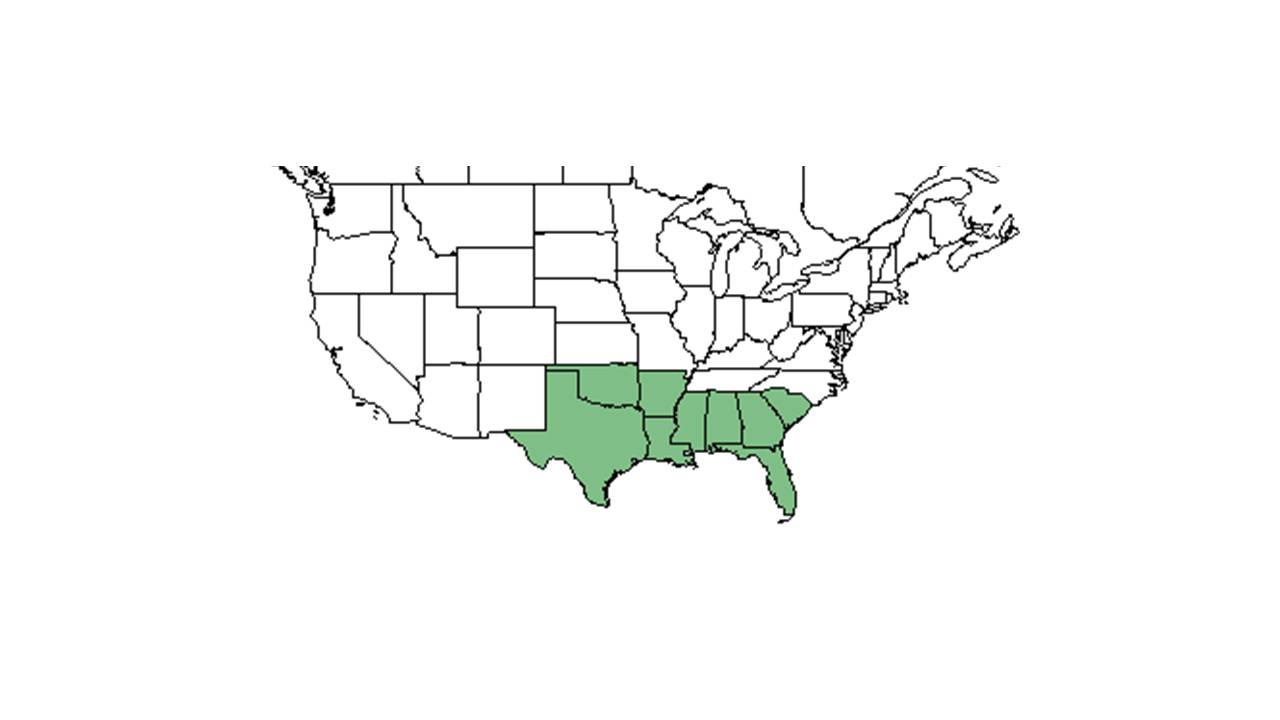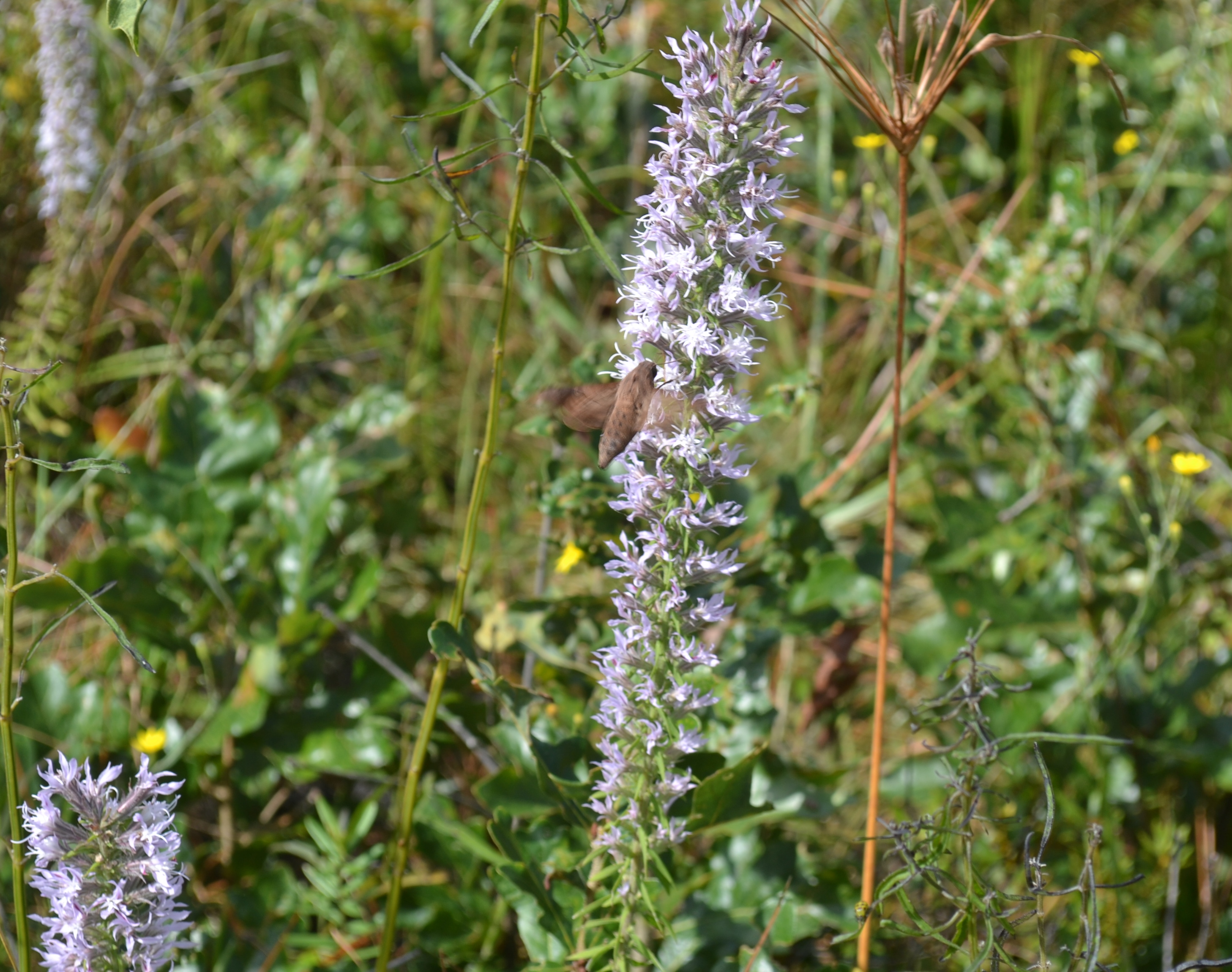Difference between revisions of "Liatris elegans"
(→Seed dispersal) |
(→Taxonomic notes) |
||
| Line 20: | Line 20: | ||
Common names: Pinkscale blazing star; Elegant gayfeather; Common elegant blazing star | Common names: Pinkscale blazing star; Elegant gayfeather; Common elegant blazing star | ||
==Taxonomic notes== | ==Taxonomic notes== | ||
| − | Synonyms: '' | + | Synonyms: ''L. elegans'' var. ''flabellata'' (Small) Gaiser; ''Laciniaria elegans'' (Walter) Kuntze; ''Laciniaria flabellata'' Small |
| + | |||
| + | Varieties: ''Liatris elegans'' (Walter) Michaux var. ''elegans''; ''Liatris elegans'' (Walter) Nichaux var. ''kralii'' Mayfield | ||
==Description== | ==Description== | ||
Revision as of 17:47, 22 February 2019
| Liatris elegans | |
|---|---|
Error creating thumbnail: Unable to save thumbnail to destination
| |
| Photo taken by Gil Nelson | |
| Scientific classification | |
| Kingdom: | Plantae |
| Division: | Magnoliophyta - Flowering plants |
| Class: | Magnoliopsida – Dicotyledons |
| Order: | Asterales |
| Family: | Asteraceae ⁄ Compositae |
| Genus: | Liatris |
| Species: | L. elegans |
| Binomial name | |
| Liatris elegans (Walter) Michx. | |

| |
| Natural range of Liatris elegans from USDA NRCS Plants Database. | |
Common names: Pinkscale blazing star; Elegant gayfeather; Common elegant blazing star
Contents
Taxonomic notes
Synonyms: L. elegans var. flabellata (Small) Gaiser; Laciniaria elegans (Walter) Kuntze; Laciniaria flabellata Small
Varieties: Liatris elegans (Walter) Michaux var. elegans; Liatris elegans (Walter) Nichaux var. kralii Mayfield
Description
A description of Liatris elegans is provided in The Flora of North America. A rhizomatous perennial that is frequent where it is found. [1]
Distribution
Ecology
Habitat
This species has been observed growing in longleaf pine-wiregrass communities, in pine-oak woodlands, bordering sink-ravines, and in live oak hammocks in semi-open to open areas. [1] It is also a ruderal species growing in powerline corridors, along roadsides, and in bulldozed sand scrub. [1] Growing in semi-open and open habitats, L. elegans thrives in dry, coarse, and/or loamy sands as well as red clays. [1] Associated species include longleaf pine, wiregrass, Symphyotrichum dumosum, Solidago, Pityopsis, Liatris pauciflora, Quercus laevis, Heterotheca subaxillaris, Haplopappus divaricatus, Polygonella gracile, Aristidia patula, and Lespedeza hirta. [1]
Phenology
This species has been observed flowering and fruiting August through November. [1]
Seed dispersal
This species is thought to be dispersed by wind. [2]
Conservation and management
Cultivation and restoration
Photo Gallery
References and notes
- ↑ 1.0 1.1 1.2 1.3 1.4 1.5 Florida State University Robert K. Godfrey Herbarium database. URL: http://herbarium.bio.fsu.edu. Last accessed: June 2014. Collectors: Ed Keppner, Lisa Keppner, Wilson Baker, Loran C. Anderson, Richard S. Mitchell, E.S. Ford, R.K. Godfrey, Bruce Hansen, JoAnn Hansen, R. Kral, John Morrill, J. P. Gillespie, Sidney McDaniel, R. Komarek, R L Lazor, Gary R. Knight, MacClendons, G. Wilder, Bill Boothe, and Marcia Boothe. States and Counties: Florida: Alachua, Bay, Calhoun, Clay, Duval, Escambia, Gadsden, Holmes, Leon, Jackson, Jefferson, Madison, Santa Rosa, Taylor, Washington, Wakulla, and Walton. Georgia: Thomas.
- ↑ Kirkman, L. Katherine. Unpublished database of seed dispersal mode of plants found in Coastal Plain longleaf pine-grasslands of the Jones Ecological Research Center, Georgia.
